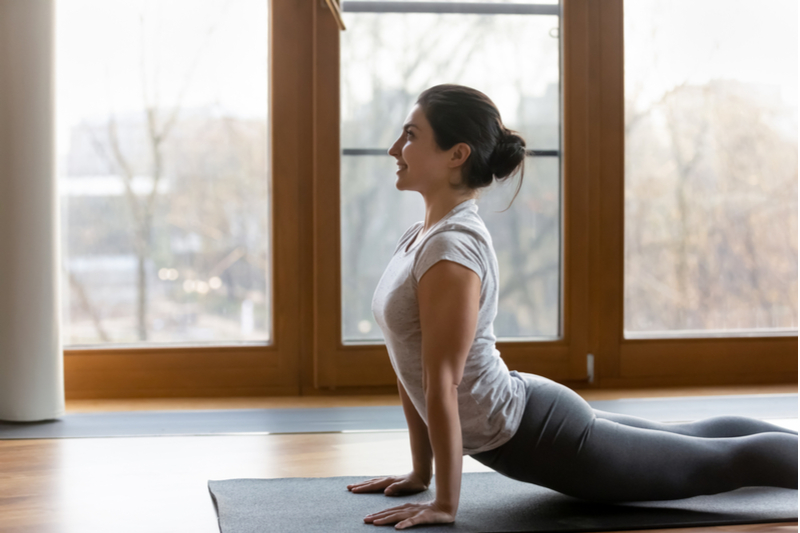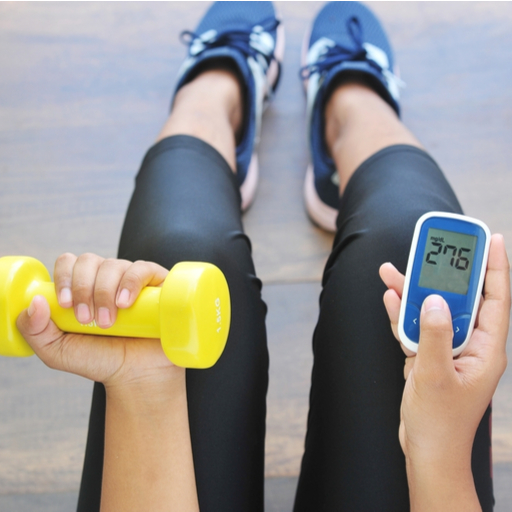Exercise for diabetic patients can be challenging. However, it is one of the best ways to lower blood sugar levels, shed excess fat and improve insulin sensitivity. Trying exercises that are too hard or wrong for you can also cause you harm. So, how can exercise help you control diabetes without medicines? Let’s get started.
Can exercise cure diabetes?
Diabetes can be managed by doing physical activities like jogging, brisk walking and climbing the stairs. Exercise for diabetic patients can help them manage weight and stabilize blood sugar levels. It can also reduce the risk of heart attacks and strokes and promote your overall well-being and health.
Risks of exercising with diabetes
Diabetes can make your joints less flexible because of the accumulation of blood sugar over time. This can cause injuries if you are doing high-intensity exercises or performing the exercises incorrectly. You might also have complications associated with type 2 diabetes, such as diabetes-related nerve damage (neuropathy) and eye problems (retinopathy). You should consult a doctor to understand how much exercise is okay for you and how intense your workouts can be.
Benefits of exercise for diabetics
Exercising regularly can help you manage your blood sugar and weight if you have type 2 diabetes. It also lowers your risk of heart attack and stroke, reduces cardiovascular risk factors, and boosts overall health and well-being. Exercise can also help prevent diabetes in people with prediabetes.
How much exercise is enough for a day?

People with diabetes should aim to complete at least 150-300 minutes of moderate physical activity every week. It is also recommended for people with diabetes to do weight-resistance training sessions twice a week, as it can lower high blood pressure, cholesterol and hemoglobin A1C levels (a three-month average of your blood sugar levels).
Best workout for diabetics
You might be asking yourself at this point, “How to control diabetes without medicine?”. You can try these exercises suggested by fitness expert Shalini Bhargava to manage diabetes at home:
Power yoga
Power yoga is a type of yoga pose that is focused on building your overall strength and endurance. It is excellent for burning calories fast and is a more intense form of yoga than traditional Hatha yoga. It has cardiovascular benefits and enhances your heart health.
Cardio Pilates

Also known as Functional Pilates, this workout strengthens your core, offers cardiovascular benefits and enhances your posture.
Metabolism conditioning
This workout improves your metabolism and increases glucose uptake. It includes cardiovascular exercises that help manage diabetes.
Walking
You don’t need a gym membership or costly exercise gear to get active. If you have supportive shoes and a safe place to walk, you can start today. Take a quick 30-minute walk five days a week. Walking can assist people with type 2 diabetes in lowering their blood pressure, HbA1c levels, and body mass index.
Cycling
About half of the people with type 2 diabetes also have arthritis. The two conditions share several risk factors, including obesity. Diabetic neuropathy, a condition that causes nerve damage, can also lead to joint pain in people with type 2 diabetes. If you experience joint pain, consider engaging in low-impact activities. Cycling, for example, can help you achieve your fitness goals while reducing stress on your joints.
Swimming
Aquatic activities offer another low-impact form of exercise. For example, swimming, water aerobics, aqua jogging, and other aquatic activities can give your heart, lungs, and muscles a workout while putting minimal stress on your joints. Water-based exercise helps people with type 2 diabetes enhance fitness, strength, and vascular health.
Team sports
If you struggle to motivate yourself to exercise, consider joining a recreational sports team. The chance to connect with teammates and your commitment to them might motivate you to show up every week. Many recreational sports provide a solid aerobic workout. Try playing basketball, soccer, softball, tennis, pickleball, or handball.
Aerobic dance
Joining an aerobic dance or another fitness class could help you achieve your exercise goals. For example, Zumba is a fitness class that mixes dance and aerobic steps for an energetic workout.
Weightlifting
Weightlifting and other strength training activities help increase your muscle mass, which can boost the number of calories you burn daily. Strength training can also improve your blood sugar control. If you want to add weightlifting to your weekly exercise routine, you can use weight machines, free weights, or even heavy household objects, like canned goods or water bottles.
Resistance band exercises
Weights aren’t the only way to build your muscles. You can also do a wide range of strengthening exercises with resistance bands. In addition to boosting your strength, exercising with resistance bands may benefit blood sugar control.
Calisthenics
Calisthenics uses your body weight to build muscle. Common calisthenics exercises include push-ups, squats, lunges, and abdominal crunches. Whether you decide to build your muscles with weights, resistance bands, or your body weight, aim to train every major muscle group. Take a day off from muscle-strengthening exercises between each strength training session to allow your body time to recover.
Which exercises should diabetics avoid?
If you have diabetes, you should avoid these exercises:
- Walking a long distance
- Running on a treadmill over prolonged periods
- Exercising in extreme heat or cold
- Weight-bearing exercises during injuries
Exercise safety tips for diabetics
Stay active, stay safe! Here are key tips to keep in mind before, during, and after workouts if you’re managing diabetes:
- Stay hydrated: Drink water before, during, and after your session to prevent dehydration.
- Wear the right shoes: Choose proper footwear to protect your feet and lower the risk of blisters or injury.
- Avoid exercising on an empty stomach: Have a small, balanced snack if needed to maintain stable glucose levels.
- Carry fast-acting carbs: Always have a glucose tablet or juice on hand if your sugar drops too low.
Listen to your body: If you feel dizzy, faint, or extremely tired, stop and rest.
Workout tips for people with diabetes
If you are planning to start a diabetes exercise routine, it is essential to track your heart rate and blood sugar levels before and after your workout. Here are some essential tips to help you get started with your workout:
- Check with your doctor to know which exercises you can try.
- Start slow and build your strength and stamina gradually.
- Try to include fun activities in your workout to stay motivated to exercise daily.
- Stop if you feel any sudden pain.
- Consume healthy carbs like fruits or fruit juices after a workout.
Naturally control diabetes
Daily lifestyle changes and physical exercise can easily manage your blood sugar levels. You now know how to manage diabetes without medicine. Enjoy your health to its maximum potential.
FAQs about exercises for diabetics
Here are the most common questions and their answers about exercises for people with diabetes. Dive in:
- Can diabetes be cured by exercise?
A combination of diet and exercise can help some people control their type 2 diabetes remission.
- Which exercise is best for lowering blood sugar?
In general, regular exercise can help lower blood sugar over time. Activities like light walking, cycling, and other low-impact movements can be beneficial.
- Which exercises should people with diabetes avoid?
Exercises to avoid if you have diabetes depend on any complications you are experiencing from your condition. For example, those with high blood pressure should steer clear of strenuous activity and heavy lifting.
- How often should diabetics exercise per week?
Most health experts recommend at least 150 minutes of moderate-intensity exercise per week, which breaks down to about 30 minutes a day, 5 days a week. Consistency is key—regular physical activity helps manage blood sugar levels more effectively than occasional workouts.
- What are the best exercises for type 2 diabetes?
The best exercises combine aerobic activity, strength training, and flexibility exercises. Some great options include:
- Walking or brisk walking
- Cycling
- Swimming
- Strength training
- Yoga or stretching
Key Takeaways
- The best workouts for managing diabetes include power yoga, walking, and cycling.
- Diabetics should avoid walking long distances and exercising in extreme conditions.
- Some exercise tips for diabetics include consulting your doctor, listening to your body, and beginning gradually.
Stay tuned to the Activ Living Community. Keep up to date with the latest health tips and trends through expert videos, podcasts, articles, and much more in nutrition, fitness, mindfulness, and lifestyle conditions like Asthma, Blood Pressure, Cholesterol, and Diabetes.
You may also be interested in the following blogs:
Popular Searches
How to lower blood pressure | Fruits good for liver | Unhealthy foods | Ragi Benefits | Basal Metabolic Rate | Acupressure points for High Blood Pressure | Ayurvedic medicine for blood pressure | How to control cholesterol at home | Homeopathy for Asthma | Biological Age | Home remedies for TB | Natural beta blockers | Negative effects of internet | Types of walking | Blood pressure calculator | Blood sugar calculator | BMI Calculator





 1800-270-7000
1800-270-7000








